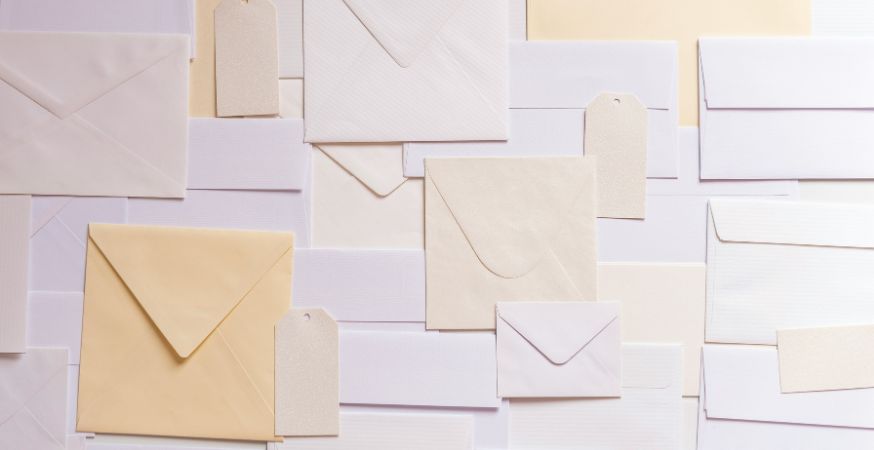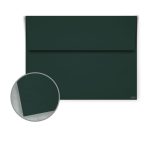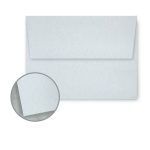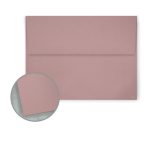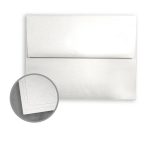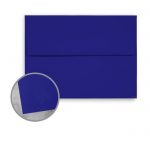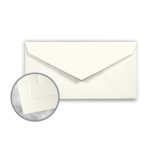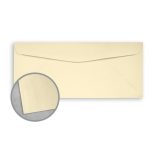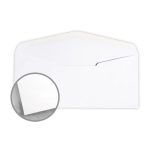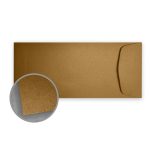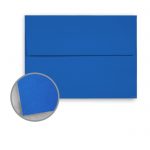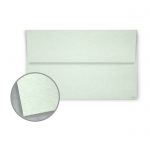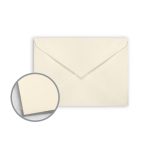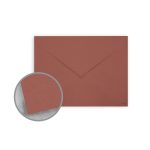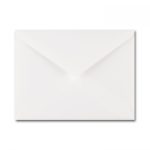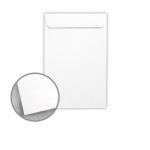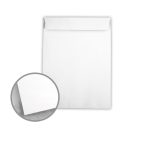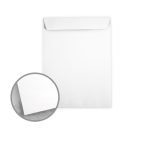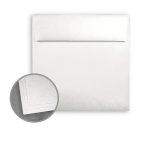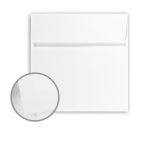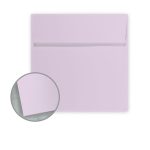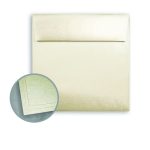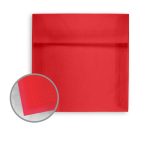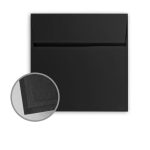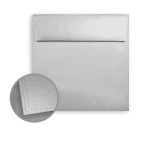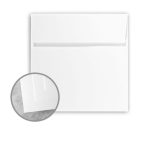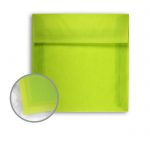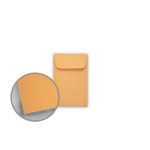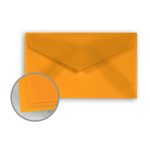Envelopes may not come in all shapes and sizes, but they do come in a very wide range of options. Determining their purpose—if they even have a specific purpose—and choosing the right envelope can be confusing.
Banks, businesses, and even our friends may push for paperless billing, evites, and other electronic correspondence, but physical mail has seen a resurgence in popularity in recent years, and studies show people are actually more likely to open physical mail than email. We totally get it—bills and other documents aside, who doesn’t love receiving a brightly colored, clearly-not-a-bill envelope with untold treasures inside?
Whether you’re sending wedding invitations, business correspondence, restocking your print shop, or for any other purpose, discerning envelope sizes and styles can feel like translating an ancient language or stumbling across a very niche piece of etiquette. At The Paper Mill Store, we carry over 2,700 types of envelopes in dozens of different sizes and styles! That’s why we’ve created this envelope size guide. With our definitive guide, you can understand standard envelope sizes and choose the right option for whatever you’re sending or printing.
In this handbook, we will explore a bit about how to classify envelopes, as well as take a closer look at specific types of envelopes.
In this Guide
Let’s take a closer look at these -lopes.
How To Classify Envelopes
Before we dig into specific styles and standard envelope sizes, we’ll start by exploring some of the ways envelopes are classified. This will help you understand different envelope styles and categories so you can narrow down your choices.
Envelopes are typically classified in three ways:
- Flap style
- Seam direction
- Envelope size
1. Flap Style
The flap is the portion that folds down and seals the envelope. Depending on the style of envelope, flaps can be located on the shorter dimension (best for hand-stuffing) or the longer dimension of the envelope (best for automatic insertion).
These are the four most common flap styles:
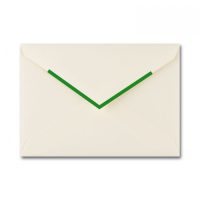
- Pointed: Pointed flaps are characteristic of Baronial envelopes. There are two types of pointed flaps: Monarch, which is the standard pointed style, and Euro, which features a deeper V with a rounded tip. The Paper Mill Store also sells contour or Arturo flaps, which are pointed but with a cut off tip.
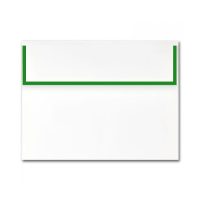
- Square: Also known as “flat” flaps, square flaps are more contemporary than pointed flaps. They are the standard flap style for Announcement envelopes.
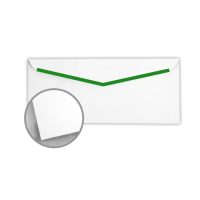
- Commercial: Commercial flaps are slightly pointed.
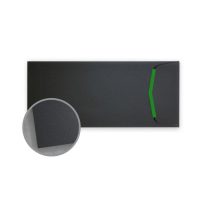
- Policy: Policy flaps are flat flaps located on the shorter edge of the envelope
2. Seam Direction
There are three common seam directions:
- Side: Side seams are located along the side edge of the envelope. This style creates a large area for printing on the back of the envelope.
- Center: Center seams travel up the center of the envelope. Their sturdy construction makes this style ideal for catalog or coin envelopes.
- Diagonal: Diagonal seams travel diagonally from corner to corner. They are the most common seam direction for commercial and baronial envelopes.
3. Envelope Size
Envelopes come in a wide range of styles, including:
- Letter envelope sizes, including business envelope sizes
- Invitation envelope sizes, including announcement envelopes, as well as baronial and Monarch envelope sizes
- Catalog and manila envelope sizes
- Square envelope sizes
- Small envelope sizes, including coin and mini-lope envelope sizes
To make matters even more complicated, each of these styles comes in a range of different sizes. We’ll spend the rest of this envelope size guide digging into different US envelope sizes and other standard envelope sizes.
Let’s peek under the flap!
Standard Envelope Sizes
No. 10 regular is the most common envelope size (bills and other business correspondence are typically sent using this size), but there are countless standard envelope sizes available for every imaginable purpose, from teeny-tiny mini-lopes to full size 9” x 12” catalog envelopes.
These are the most common standard envelope sizes used for printing and mailing:
Standard Envelope Sizes for Printing & Mailing
Letter Envelope Sizes
Letter or correspondence envelopes are the most popular envelope style for general correspondence, including most business and personal correspondence. They are typically broken down into two further categories—business and commercial.
These envelopes are used for a variety of purposes, including:
- Business and personal correspondence
- Billing
- Statements
- Legal correspondence
- Invoices
- Promotional mailers
- Handwritten letters
Business Envelope Sizes
Despite their name, business envelopes are commonly used for both business and personal correspondence. They are available in a number of styles with square, side, or pointed flaps (called “commercial flaps”), as well as with or without windows. The term “regular” indicates that the envelope does not have a window.
They are commonly used for:
- Business correspondence
- Bills and notices
Business Envelope Size Chart
Invitation Envelope Sizes
Invitation envelope sizes include:
- Announcement envelopes
- Baronial and monarch envelopes
Announcement Envelope Sizes
Announcement envelopes feature a side seam and a square flap. They are more casual than other styles and are available in a wide range of different paper stocks, including different paper finishes and basis weights.
They are commonly used for:
- Invitations and wedding stationery
- Greeting and holiday cards
- Photos
- Promotional or marketing material
Announcement Envelope Size Chart
Baronial and Monarch Envelope Sizes
Baronial envelopes have diagonal seams with a pointed flap. They are available in many of the same sizes and paper finishes as Announcement envelopes, but their flap style and seam direction make them a more formal alternative. Monarch envelopes are a type of baronial envelopes, but only come in one size (3 ⅞” x 7 ½”).
They are commonly used for:
- Formal announcements
- Wedding invitations
- Hand-lettered notes
Baronial and Monarch Envelope Size Chart
Catalog and Manila Envelope Sizes
Catalog envelopes are constructed using Kraft paper or Manila or other card stocks, with a strong center seam and a heavily gummed flap along the shorter dimension. They’re the perfect size for sending paper documents that can’t be folded, and their strong construction makes them durable and ideal for mailing heavy-weight materials.
They are commonly used for:
- Catalogs
- Large booklets
- Annual reports
- Documents and contracts
- Brochures
- Sales materials
Catalog and Manila Envelope Size Chart
Square Envelope Sizes
Square envelopes are a modern and stylish square shape (surprise!) with side seams and contemporary flat flap.
PRO TIP: The United States Postal Service considers square envelopes to be a non-standard, “non-machineable” size, so they require an extra $0.44 (or more, depending on size) in postage per letter in addition to the normal postage required.
They are commonly used for:
- Announcements
- Card making
- Invitations
- Holiday cards
- Greeting cards
Square Envelope Size Chart
Small Envelope Sizes
Coin and Mini-lope Envelope Sizes
Coin envelopes and mini-lopes are small specialty envelopes that are typically too small to mail, but they’re ideal for hand-delivered notes, coins, or gift cards. Mini-lopes are more decorative with eye-catching colors and styles, while coin envelopes are also commonly made of Manila card stock.
Coin and Mini-lope Envelope Size Chart
Wrapping Up
Envelopes come in copious styles and sizes, which can make it tricky to know which envelope to use for what purpose. The good news is that there are no “rules” when it comes to selecting an envelope, and you can usually adopt the “if I fits, I sits” approach (IYKYK). So long as the envelope contains the item you are sending and it meets postal regulations, you can send it on its way knowing it will arrive.

